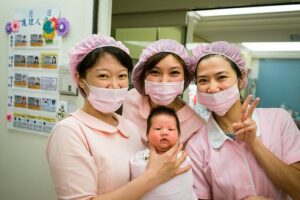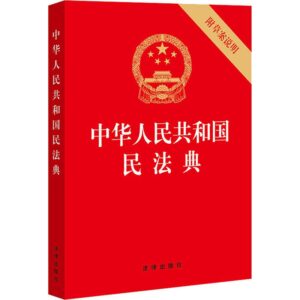IN SOCIAL AND GENDER RELATIONS, the COVID-19 pandemic has proven to be a kaleidoscope revealing light and darkness, strength and vulnerability, as well as beauty and ugliness, in China as elsewhere. The crisis has brought attention to pre-existing inequalities and prompted a rise in feminist consciousness in China — even if ‘feminism’ 女权 itself is deemed a ‘sensitive word’ by the censors.
‘My Body, Whose Choice?’
In April 2020, conservative protesters in the United States borrowed the feminist slogan ‘My body, my choice’ to urge their states (including Texas and Virginia) to lift their coronavirus restrictions and to encourage people to refuse to wear face masks.1 The rhetorical weapon was originally created to advocate for women’s abortion rights, yet, ironically, it was adapted to oppose government-mandated stay-at-home orders. At the same time, ‘anti-vaxxers’ held signs claiming vaccines ‘violate bodily autonomy’. A number of women in the People’s Republic of China (PRC), meanwhile, were making — or being motivated to make — rather different choices.
In early February 2020, China’s state-run Xinhua News Agency posted a video on Twitter featuring a group of female medical professionals from Xi’an who voluntarily had their heads shaved before heading to the coronavirus frontline in Wuhan, which was then the epicentre of the pandemic.2 In the video, these women — dressed in navy-blue uniform jackets — raise their fists and give the thumbs up after their haircuts; even face masks cannot hide their smiles. They look happy, calm and strongly determined, showing not the slightest hesitation. This calls to mind the legendary woman warrior Hua Mulan, who cut her hair short and disguised herself as a man to fight in the army of the Northern Wei dynasty (386–534 CE). These images also call to mind the ‘little red guards’ 小红卫兵 who cut their hair short to fight during the Cultural Revolution (1966–1976).
Also in February, China Central Television (CCTV) produced a documentary featuring the nurse Zhao Yu 赵瑜 working in the emergency ward at a military hospital in Wuhan while nine months pregnant. Overruling the objections of her family and peers, Zhao said, ‘I believe all the difficulties can be conquered when my child accompanies me fighting in this battle.’3 CCTV described her as a ‘great mother and respectable angel in a white gown’ 她是伟大的母亲, 更是让人敬佩的白衣天使.4 The media also reported stories of other pregnant women who insisted on working to fight the coronavirus. Some of the women were medical staff taking the temperature of commuters on public roads; some were working at local clinics; and some were administrators in charge of sourcing medical supplies. One nurse returned to work in a Wuhan hospital just ten days after surgery following a miscarriage. These women continued to work despite fainting spells and internal bleeding.5
Wuhan was home to another story of female sacrifice on the COVID-19 frontline. According to the Changjiang Daily, seven nurses from the Traditional Chinese Medicine Hospital who were new mothers breastfeeding their babies — with the youngest baby aged four months — voluntarily decided to stop breastfeeding and return to work when their hospital began admitting patients infected with coronavirus.6 Some mothers had to pump their breast milk by hand to alleviate the pain caused by engorgement while at work. Moreover, they were only able to watch their babies remotely via smartphones because they needed to stay on duty at the hospital. Many had not seen their babies for more than ten days at the time of the report. The media hailed them as ‘the most beautiful mothers’ 最美的妈妈.
The crown of ‘most beautiful’ was also awarded to nurses whose skin had been damaged by the continuous wearing of surgical masks, goggles and other personal protective equipment, as well as exposure to disinfectant. The damage included deep lines on their faces, blisters and patches of bleached skin. A poster made by the Chinese Communist Party organ the People’s Daily called these marks the ‘most beautiful “epidemic battle makeup of counter-marchers”’ 逆行者最美的‘战疫妆’.7 It was also reported in praiseworthy terms that many medical workers wore adult diapers during their shifts as there was no time to go to the toilet. Shortages in menstrual hygiene products made this a particular challenge for women — something the propaganda did not mention.8
The women who shaved their heads understood that this would ‘de-feminise’ them in a society otherwise obsessed with narrowly defined ideas of feminine beauty and youthfulness (for example, the ‘A4 waist challenge’ that has prompted thousands of Chinese women to share photos on social media revealing how skinny they are by holding a piece of A4 paper vertically in front of them);9 they were also aware of the consequences of stopping breastfeeding or working during pregnancy and were conscious of the damage to their skin. However, they had chosen, in the words of the Xinhua News Agency and People’s Daily, to ‘sail against the current’ 逆流而上. In her 2016 book Women Warriors and Wartime Spies of China, Louise Edwards describes the actions of such ‘women warriors’ and ‘self-sacrificing daughters’ of the nation as giving lie to the notion of women as inherently ‘vulnerable’ or weak.10 In official media accounts, their ‘derring-do’ is testament to their heroism, altruism, sense of unity, resilience and patriotism; just like men, they are capable of ‘sacrificing the “small family” for the “big family”’ 舍小家, 顾大家. These ‘women worriers’, whose heroic choices are written into their bodies, have been held up as role models to boost public morale and help China through the health crisis.
Despite these heroic efforts, women are disadvantaged in China’s health and medical industry. According to a report released by China’s online recruitment website Zhipin.com in March 2020, the gender pay gap between men and women was 38.4 percent in medical care in 2019 — among the top four gender wage gaps across fifteen sectors — meaning women healthcare workers earned only 60 percent of their male counterparts’ wages.11 This gap has persisted despite the government’s wage increase for frontline health workers during the coronavirus crisis.12
Fighting for Justice and Closing the Gender Gap
At the same time, there was a public, if sporadic and fragmented, backlash to these stories of heroines. This is evidence of a rising ‘feminist consciousness’ that extends beyond activist circles to a growing awareness of gender inequality and a trend towards resistance and pushing for recognition of women’s contribution, rights and interests. This echoes the calls made by people around the world for gender equality and efforts to improve women’s situations during the pandemic. For example, hundreds of women in Asian countries including India and the Philippines have made sacrifices to help their local communities prevent the spread of the virus; many have been involved in programs that also aimed to empower women during the pandemic; and female political leaders such as New Zealand’s Prime Minister Jacinda Ardern, German Chancellor Angela Merkel and Taiwan’s President Tsai Ing-wen have adopted inclusive approaches to handling the crisis and received widespread praise.13
Riding on this wave, in China, many people have expressed their gratitude to these ‘woman warriors’ while questioning the way their sacrifices have been politicised to promote Positive Energy 正能量. (This is one of President Xi Jinping’s favourite slogans, meaning to ‘give people confidence and hope, encourage people to love their country, society and life, as well as to pursue nice things’,14 which is essential to the state’s strategy of control.)15 One netizen commented: ‘The sacrifice and contribution of these women nurses and doctors is plain for all to see. Do not attempt to use their bodies as heavy-handed “propaganda”, they shouldn’t be morally kidnapped like this.’16
Other netizens questioned whether the nurses had genuinely chosen to shave off their hair; a video released by Gansudaily.com on Weibo showed women from Gansu province shedding tears during and after their haircut. Some commentators pointed out that men serving on the coronavirus frontline did not have to shave their heads; why couldn’t women simply have short hair like their male counterparts? These debates led to the removal of some of the ‘propaganda’ from the Internet, such as the video clip of the pregnant nurse by CCTV and the one by Gansu Daily.
One of the heroines of the crisis has undoubtedly been Ai Fen 艾芬, a Chinese doctor and director of the emergency department at Wuhan Central Hospital. She was known as the ‘whistle-giver’17 发哨子的人 of the novel coronavirus. Ai was among the first healthcare workers to encounter the outbreak of the virus and alerted her colleagues. However, she was reprimanded by her hospital for ‘spreading rumours’ and ‘harming stability’.18 Her interview with People magazine posted on social media was also deleted within three hours of its publication on 10 March 2020. In her words: ‘If I had known what was to happen, I would not have cared about the reprimand. I would have fucking talked about it to whoever, wherever I could.’19 To evade censors, Internet users have posted in foreign languages and used other means such as emojis, Pinyin, Morse code, Klingon and oracle bone scripts to repost the article. Unlike the model ‘sacrificing daughters’ in official accounts, Ai is a ‘hidden’ hero who dares to tell the truth by ‘sailing against the current’ of the bureaucracy.
The ‘Shadow Pandemic’ and ‘Coronavirus Divorce’
With the escalation of the coronavirus outbreak around the globe, many countries have imposed lockdowns of cities and other social restrictions to contain the virus. This, however, has led to the emergence of a ‘shadow pandemic’: a rising number of women have reported falling victim to domestic violence, with a significant surge from the pre-crisis period, including in Argentina, Australia, Cyprus, France, and Singapore.20 In Hong Kong, many women were reportedly overwhelmed by their ‘natural duty’ of household chores and this sometimes led to ‘pushes and shoves’.21 In mainland China, national-level statistics on domestic violence during COVID-19 are not available, however, media reports similarly suggest that domestic violence has increased sharply during this period.
Meanwhile, divorce proceedings have surged in many countries throughout the year. For example, in Italy, lawyers reported a 30 percent rise in the number of couples inquiring about and initiating divorce proceedings from the beginning of that country’s lockdown in early March through to May.22 In Australia, the national information and mediation group The Separation Guide reported that the number of couples considering separation had increased 314 percent compared with the pre-lockdown period.23 In Japan, ‘coronavirus divorce’ has become a trending term during the pandemic and divorce rates have reportedly increased, with 35 percent of marriages ending in separation (at the time of reporting).24 In Saudi Arabia during the lockdown, the divorce rate had increased by 30 percent in February from the same period last year.25 In China, national divorce statistics are not yet available as official data are released yearly. However, various media reports suggest that inquiries about separation and divorce rates have been climbing, especially since the lockdown period.
In one case, a woman from Lingshi county, in northern China’s Shanxi province, committed suicide on 9 March after writing on Weibo a few hours earlier: ‘I always felt domestic violence was far away from me, however, today is a nightmare, I’m suffocated by fear and helplessness. My spirit is completely broken.’26 This incident suggests that the pressures of lockdown and isolation have resulted in an increase in domestic violence, which has extended to women who may not have experienced it in the past.
According to Wan Fei 万飞, a retired police officer and founder of the Under the Blue Sky Association for the Protection of Women’s and Children’s Rights 蓝天下妇女儿童维权协会, an anti–domestic violence organisation from Jingzhou in Hubei province, 90 percent of domestic violence incidents reported in January and February 2020 were related to the COVID-19 epidemic.27 He said the domestic violence calls received by the local police bureau in Jingzhou’s Jianli county 监利县 doubled in January and had more than tripled from forty-seven to 162 cases in February compared with the same period last year. Men were the perpetrators in 97.4 percent of the cases and women were the victims in 94.7 percent.28 The cause of the increase in violence can be attributed to people’s fear and anxiety about the extended quarantine, financial stress on households, as well as weakened support systems for survivors of domestic violence.29
The divorce rate in Wuhan reportedly doubled after the lockdown was lifted.30 There were also record highs in divorce filings in other places, including Xi’an, Shenzhen, Guangzhou, Dazhou in Sichuan province and Miluo in Hunan province.31 Some of this was due to couples who had intended to file for divorce before COVID-19 hit putting it off because of the lockdown.32 Other factors reportedly included disagreements over the sharing of responsibility for childcare and housework, disagreements about mask wearing or simply having to spend so much time in each other’s company.
One could easily blame COVID-19 for both the ‘shadow pandemic’ and the increasing divorce rates. I believe, however, that the pandemic has simply drawn public attention to the pre-existing — but now magnified — shadow pandemic of domestic violence, while also magnifying existing problems within marriages.
Statistics released by All China Women’s Federation in 2015 showed that 30 percent of married women in China’s 270 million households had experienced domestic violence (in comparison, on average, one in four women has experienced physical or sexual violence by an intimate partner in Australia and the United States);33 and, among this, 70 percent of male perpetrators abused both their wives and their children physically.34 Of the 157,000 women who committed suicide, on average, each year, 60 percent had experienced domestic violence.35 The statistics also showed that one Chinese woman suffers domestic violence every 7.4 seconds. On average, a woman will suffer thirty-five incidents of domestic violence before reporting it to the police.36
The statistics suggest three things. First, many women do not enjoy equal status with men within their household, despite the Chinese government’s efforts to promote gender equality through legislative reforms and various social policies and measures. Such inequality is enhanced by the growing incidence of ‘mistress keeping’ 包二奶 by Chinese men, along with the growth of private investigation services specialising in tackling this issue.37 Second, in the absence of clear and widespread government and media messaging to the contrary, many women see domestic violence as normal marital behaviour, believing doctrines such as ‘Do not wash your dirty linen in public’ 家丑不可外扬 and ‘Couples fight at the head of the bed and compromise at the end of it’ 夫妻床头打架床尾和. Many also see domestic violence as punishment for something they lack or did wrong, rather than a social problem. Third, China’s anti–domestic violence law, enacted in March 2016, has been compromised by prevalent judicial mediation aimed at ‘saving the marital relationship’ and ‘maintaining social harmony’.38
Data released by China’s Ministry of Civil Affairs (MCA) reveal that, in 1978, 285,000 couples registered for a divorce; in 2012, the figure was more than 3.1 million, and it was 4.15 million in 2019.39 According to Zhou Qiang, 周强, president of the Supreme People’s Court, in seven cases out of ten, it is the woman who initiates a divorce.40
The National People’s Congress passed the long-awaited Civil Code 民法典 on 28 May 2020.41 Among other provisions concerning property rights, inheritance, contracts and so on, the new law, to take effect on 1 January 2021, introduced a thirty-day ‘cooling-off period for divorce’ 离婚冷静期 to encourage couples to reconsider — reinforcing its mediation-oriented approach to conjugal disputes. This clause stirred an open discussion online about the state’s interference in private relationships and raised concerns about the protection of women’s rights. Fortunately, the ‘cooling-off period’ does not apply where there has been a history of domestic violence or extramarital affairs. However, as one needs to provide evidence to file for divorce on the grounds of domestic violence, this makes it very difficult for women to win their divorce case. This was evident in the case of ‘Liu’ (full name not provided), a woman from Henan province whose divorce request was denied by the local court despite her presenting medical documents to prove her injuries, which included her being paralysed when trying to jump from a second-storey window to escape her abusive husband. Liu was told by local police that her paralysis was a result of her ‘attempted suicide’ rather than domestic violence.42
A policy enacted by the local government of Jinan, Shandong province, in response to the coronavirus outbreak sparked a similar controversy. On 8 February, after schools were closed during lockdown, education officials in Jinan suggested that in families with small children where both parents were employed, women should take the initiative to apply for leave to care for the children.43 Many people called the policy sexist and accused the government of reinforcing existing patriarchal norms and gender inequities in the job market — that is, in employment opportunities, the recruitment process and the unequal payment between men and women. One netizen commented on Weibo: ‘Is it your business who takes care of the kids at home? Why does it have to be women? Every family can make their own arrangements.’ Another noted: ‘We’re not refusing to look after the children at home because we’re feminists. We just need the government and society to treat men and women equally, and not to use this kind of gender-biased language.’44 Others pointed out that the policy was also biased against men who preferred to be the one to look after the children.
The call for a traditional division of domestic labour is consistent with gender education campaigns in recent years under President Xi. These campaigns reinforce the idea of ‘traditional family values’ as being crucial for familial harmony and social stability and thus achieving the China Dream itself.45 They are behind training programs aimed at cultivating feminine virtues and fostering masculinity, such as the New Era Women’s School 镇江新时代女子学堂 run by a college in Zhenjiang, in southern China. The school teaches female students how to behave ‘like a woman’ through studying Chinese history and cultural etiquette such as the correct way of pouring tea, using ‘the right amount of make-up’ and sitting ‘with [their] bellies held in and legs together’.46 At the same time, boys are encouraged to join boot camps teaching them how to act like ‘a real man’: confident, diligent and equipped to ‘pick up the steel gun’ to safeguard the nation.47 Military-style programs are designed to tackle the supposed ‘masculinity crisis’ that first emerged in the 1980s in which young men have become ‘feminised’, lack confidence and are without ambition; similarly, the most popular boy bands are popularly likened to ‘little fresh meat’ 小鲜肉.
Seeing Female Workers, Respecting Women’s Choices and Empowering Women
From the end of February 2020, the hashtag #SeeingFemaleWorkers 看见女性劳动者 went viral on Weibo (with 630 million reads and 901,000 users joining the discussion until 22 July 2020), calling for the recognition of women’s contribution during the pandemic.48 One netizen who used the hashtag commented: ‘Women really have held up this fight against the epidemic.’ Another wrote: ‘I didn’t have a sense of it before, but I’m starting to admire female comrades more and more!’49 The hashtag led to a wider call for recognition of women’s contribution to society, including that of women teachers, police, drivers, and other professionals.
The struggle for women’s rights was reignited on another front in 2020 by a comment on Douyin (the Chinese TikTok) about the ‘child-free lifestyle’ of revered dancer Yang Liping 杨丽萍 (who is known as the ‘Peacock Princess’ after one of her most famous dances).50 A female netizen accused the 61-year-old artist of having ‘failed as a woman’ because she had never had children. The Douyin video had received more than 11,000 likes by 8 June. On Weibo, where it also circulated, the majority opinion was in support of Yang. One person wrote: ‘A sow has the happiness of a sow, a peacock has the happiness of a peacock. The problem of the sow is that it very stupidly insists that its [kind of] happiness suits the peacock as well.’ Another asserted that reproductive choices were ‘an individual right’.51 Chinese celebrities including actress Li Ruotong 李若彤, singer and actress Qi Wei 戚薇 and actress Chen Shu 陈数 weighed in, urging people not to define or judge women based on their reproductive choices. Following the attack on Yang, 41-year-old Chinese actress Qin Lan 秦岚 was asked about her marriage plans in an interview; she responded: ‘Some people even say that it’s women’s obligation to bear children. To them I want to say, it’s none of your business if I use my uterus or not.’52 This stirred another wave of debate on the Internet.
The conversation about women’s choices around marriage and childbearing will likely continue as more and more women in China choose to postpone marriage and not have children. Statistics from the MCA show the country’s marriage rates have been in decline for five consecutive years, from 9.9 per 1,000 persons in 2013 to 7.3 per 1,000 persons in 2018. People are also marrying later, with the highest number of marriage registrations before 2012 among those aged between twenty and twenty-four years, while in 2018 those aged between twenty-five and twenty-nine made up the majority.53 Data from the National Bureau of Statistics show that China’s birth rate has been in decline as well, dropping year on year to reach 10.48 per 1,000 people in 2019 — the lowest since 1949.54
China’s video-streaming show Sisters Who Make Waves 乘风破浪的姐姐 debuted in June 2020 on Mango TV, sparking discussion about
women and ageing. The show features thirty ‘middle-aged’ female celebrities (with an average age of thirty-five-plus) such as fifty-two-year-old singer Yi Nengjing 伊能静, forty-eight-year-old actress Ning Jing 宁静 and thirty-seven-year-old actress Huang Shengyi 黄圣依 showcasing their talent on stage and competing for limited spots to form an idol group. While some viewers believe this show has empowered ‘old girls’ and broken the link between women’s value/beauty and being ‘young, slim and sweet’, others have argued that the show fails to address the real issues faced by women and tells women that they must be ‘young and beautiful to make a new start’.55 Whether the show empowers or stereotypes women remains controversial.
Another noteworthy action centred on Chinese women was the #‘Rice Bunny’ 米兔 campaign,56 which was part of the global #MeToo movement that started in 2018. Although censored by the government, the movement has raised awareness of the protection of women’s rights and inspired many Chinese women to speak out against sexual assault. This movement has had some success in China — marked by the country’s first successful prosecution for sexual harassment in July 2020. This resulted in a Chinese court’s decision to order Liu, the sexual offender and director-general of a non-profit organisation in Sichuan province, to apologise to ‘Xiao Li’ (a pseudonym), the prosecutor and a social worker57 — a success for collective efforts in advancing Chinese women’s rights.
Overall, between the domestic crisis engendered by the pandemic, the divorce provisions of the new civil law and the debate around having children, 2020 was a year that exposed the ongoing struggles and new challenges for Chinese women. These include unequal social and gender relations that have been institutionalised in a nation in which no woman has ever taken the top position in the Party or state, few have served in the Politburo and none in the powerful Politburo Standing Committee. There are also fewer employment opportunities (especially good jobs) for women and the gender pay gap between men and women continues in the job market.58 And yet, under President Xi, overt feminist activism has never been tolerated, and terms such as ‘feminism’ and ‘me too’ are considered ‘sensitive’ and subject to censorship. Rising consciousness is one thing, but women have a hard struggle ahead to achieve true equality.








